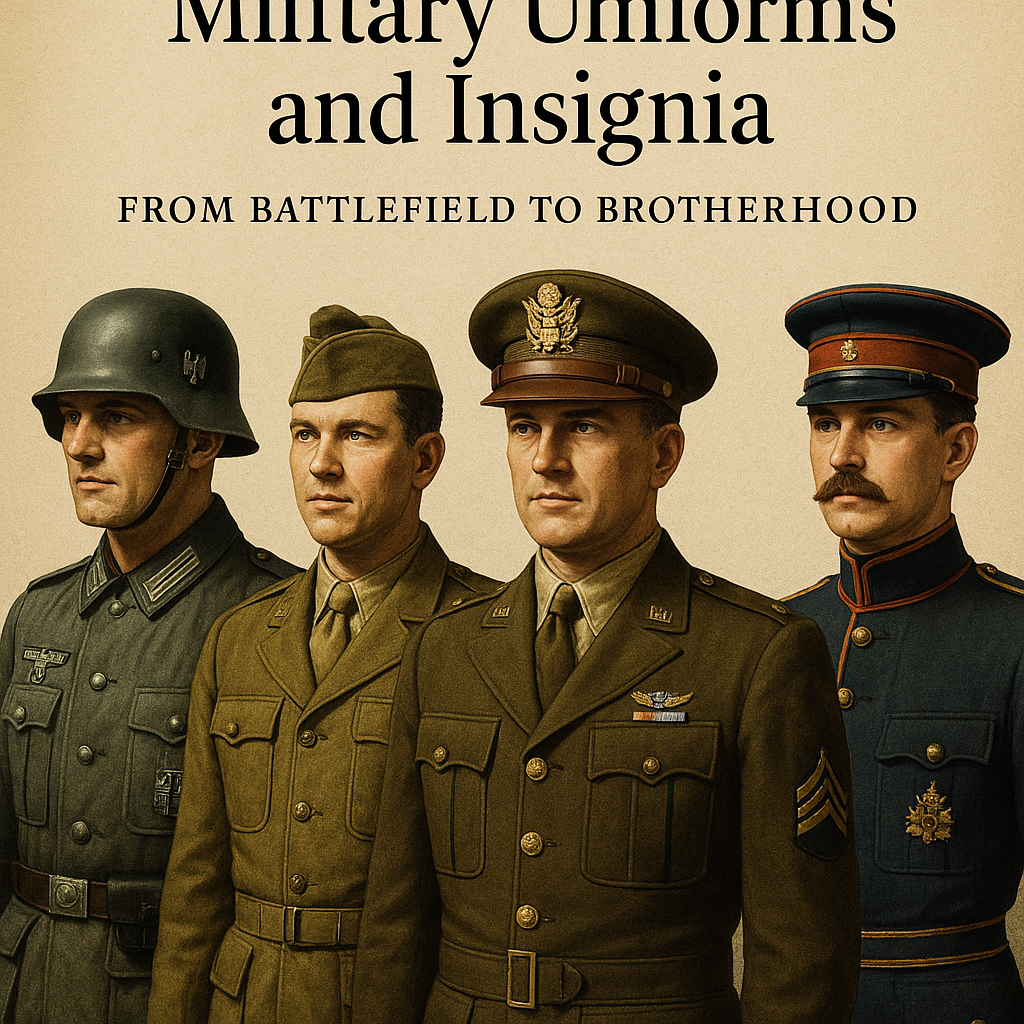
The Story Behind Military Uniforms and Insignia: From Battlefield to Brotherhood"
Published on Jun 29, 2025
The Story Behind Military Uniforms and Insignia.
Uniforms and insignia are two of the most defining visual elements in military history. They do more than indicate rank or affiliation—they carry deep meanings that resonate with identity, hierarchy, and honor.
Over generations, military uniforms have evolved from ornate attire to tactical combat wear, while insignia became markers of valor, skills, and lineage. Understanding their story gives us insight into how armies build unity and structure—and how history is woven into fabric and thread.
The Origins of Military Uniforms
Uniforms as a concept date back thousands of years. Early warriors in Ancient Egypt, Rome, and Greece began using consistent dress to distinguish allies from enemies. But it wasn’t until the 17th and 18th centuries that full standardization occurred in European militaries.
By the time of the Napoleonic Wars, uniforms had become complex, colorful, and closely tied to national pride. The redcoats of the British Army or the blue jackets of the French stood as powerful symbols of empire and identity.
These early uniforms were not only for appearance—they helped create a sense of order, discipline, and camaraderie among soldiers.
Insignia: A Language of Its Own
Insignia are visual representations of:
- Military rank
- Branch or specialty
- Unit or regiment
- Campaigns served
- Awards or honors
This visual "language" communicates critical information instantly. In the chaos of war, knowing who’s in command or what unit someone belongs to could be life-saving.
For example:
- A WW2 U.S. Army Sergeant would wear chevrons pointing up with one or more rockers.
- A German Waffen-SS officer might feature collar tabs and sleeve eagle insignia.
- Soviet troops displayed shoulder boards indicating rank and service branch with stars and colors.
Categories of Military Uniforms
Military dress is not one-size-fits-all. Most forces maintain at least three primary categories:
- Service Uniforms
Worn for daily duties and administrative roles. These are clean, professional, and functional. - Dress Uniforms
Reserved for ceremonial events or formal occasions. Often adorned with medals, ribbons, and ornate insignia. - Combat Uniforms
Designed for field use. Prioritize camouflage, mobility, and protection. Insignia are typically more subdued here for operational security.
Each uniform comes with distinct placement rules for insignia, ensuring clarity and consistency across all branches.
Rank Insignia Explained
Rank insignia are possibly the most recognized symbols in the military. They're vital for establishing command structure and showing experience levels.
Here's a simplified breakdown:
Rank TypeInsignia ExamplesEnlisted Personnel | Chevrons (e.g., Pvt., Corporal, Sergeant)
Non-Commissioned Officers (NCOs) | Chevrons with rockers or additional bars
Commissioned Officers | Bars, stars, pips (e.g., Lieutenant, Captain, Colonel)
Generals | Stars, eagles, or swords depending on the country
Collectors often seek historically accurate rank patches from key periods such as WW2, Vietnam, and Cold War eras.
Specialty and Unit Insignia
Beyond rank, uniforms often feature specialist badges and unit patches that reveal a soldier’s area of expertise or military unit.
Examples include:
- Airborne wings – indicating parachute qualification.
- Infantry blue cord or badge – worn by U.S. infantry.
- Regimental patches – showing division or corps affiliation.
These insignia promote a sense of pride and belonging while helping others identify the wearer’s role and legacy.
The Transition to Camouflage
The bright, decorative uniforms of the 18th and 19th centuries were eventually phased out in favor of practicality. The rise of trench warfare and aerial observation during World War I led to the development of camouflage.
Different environments gave birth to unique camo patterns:
- Desert camo for arid operations
- Woodland camo for jungle and forested zones
- Digital camo for modern armies using pixel-like patterns
Today’s combat uniforms are designed with concealment and comfort in mind but still retain simplified insignia for identification.
The Collector’s Perspective
Military uniforms and insignia are highly sought after in the collector’s market. Authentic WW2 pieces, in particular, are valuable both historically and financially.
Popular collectible categories include:
- WW2 German tunics with eagle and collar tabs
- U.S. Army Ike jackets with division patches
- British battledress uniforms
- Soviet officer shoulder boards
- Campaign medals and rank chevrons
At Paddelaters.com, you’ll find hand-selected uniforms and insignia from major conflicts like WW2, Korea, and beyond—ideal for enthusiasts, reenactors, or educational displays.
Preservation and Display Tips
To maintain historical value:
- Store uniforms in cool, dry places away from sunlight
- Use padded hangers or archival boxes
- Never glue or tape insignia to displays—use stitching or holders
- Document provenance when possible
These steps ensure that your items remain intact for generations and can be appreciated as both art and artifact.
Conclusion
Military uniforms and insignia tell powerful stories. They speak of valor, identity, and structure. From ancient armies to modern forces, these garments and badges have evolved to meet the needs of both function and symbolism.
For collectors and history lovers, studying these items offers a tangible connection to the past. They remind us of the people who wore them—their courage, commitment, and sacrifice.
Whether you’re interested in adding rare pieces to your collection or simply understanding their deeper meaning, uniforms and insignia are an essential part of military heritage.
